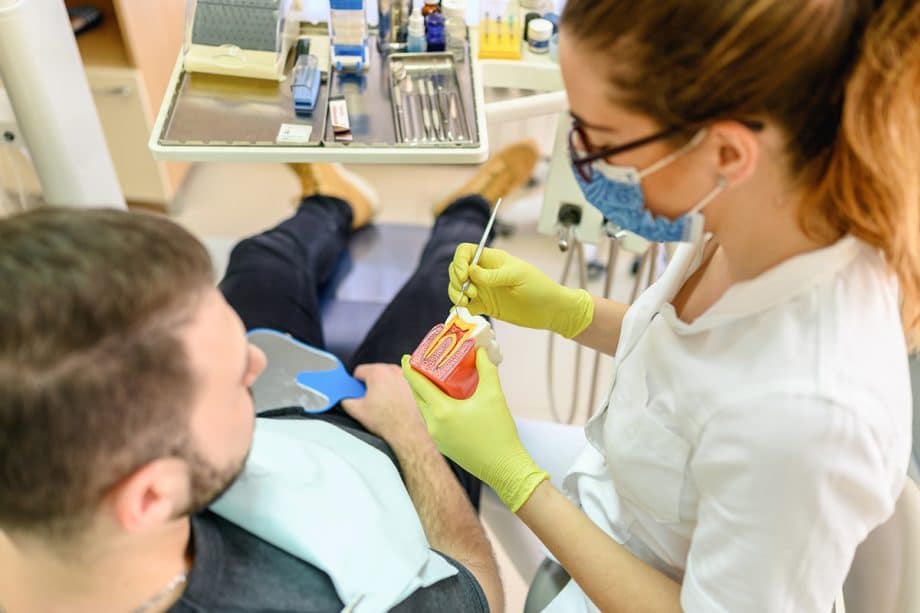Root resorption is a condition affecting the root of a tooth. It is not very common, but it does occur in a small percentage of people, about 5-10%. It can cause the tooth to become loose and even fall out. There are ways to treat it, but the best option is always prevention. Consider these 3 tips to prevent root resorption.
What is Root Resorption?
Root resorption occurs when the root of a tooth breaks down and dissolves. The process is gradual, but if it goes untreated the root may be lost completely. There are two types of root resorption:
- External. External root resorption is when the root deteriorates from the outside. The cells in the support structures for the tooth attack the root tissue and slowly break it down until it is completely dissolved.
- Internal. Internal root resorption is when the root deteriorates from the inside. The cells inside the tooth attack the root tissue inside, making the root walls very thin. Eventually holes will develop in the roots as they gradually dissolve.
What Causes Root Resorption?
Root resorption is most often caused by trauma of some kind, such as a blow to the mouth that injures a tooth. The force may knock the tooth slightly out of position, which may cause inflammation and irritation to the support structures for that tooth. This in turn causes the cells to attack the root of the tooth. Force can also cause damage to the dental pulp inside of the tooth, which can trigger the same effect where the cells begin to attack the root tissue, but from the inside.
Less common causes may be poor dental hygiene and orthodontic treatment. Poor dental hygiene can lead to an increase in bacteria, causing tooth decay and gum disease. Orthodontic treatment shifts the teeth out of their usual position, which can aggravate the support structures for the teeth and start the process of resorption.
Prevent Root Resorption With These 3 Tips
Root resorption may be preventable when you do the following:
- Keep Your Teeth Clean. Keeping your teeth healthy begins with good oral hygiene habits. Brush your teeth twice a day with fluoride toothpaste for at least 2 minutes. Floss your teeth once a day, making sure to curve the floss around each tooth. These practices may prevent root resorption from occurring.
- Protect Your Teeth. Wear a mouthguard whenever you play sports, even for low contact sports. Wear a night guard if you grind your teeth. Preventing excessive force from being applied to your teeth can possibly prevent root resorption.
- Get Regular Dental Care. Getting your teeth cleaned and examined every 6 months is important for your dental health. Not only does it help to keep your teeth clean to avoid root resorption, it also allows your dentist to identify the signs of root resorption in the early stages so that it can be treated. Early treatment may save your teeth.
Who Treats Root Resorption?
Because it is rare, your dentist may refer you to an endodontist for treatment of root resorption. Endodontics is a specialization within the field of dentistry that diagnoses and treats conditions affecting the dental pulp and root canal of a tooth. Both internal and external root resorption can be treated by an endodontist.
Eagle Endodontics Provies Root Resorption Treatment
If you’re experiencing any of the symptoms of root resorption, such as loose teeth, shifting teeth, toothache, pink or red spots on the tooth, or holes near the gumline, seek professional treatment right away. Eagle Endodontics can diagnose and treat root resorption to preserve the existing root structure and save the tooth in many cases.
Contact us today to learn more and schedule an appointment.

